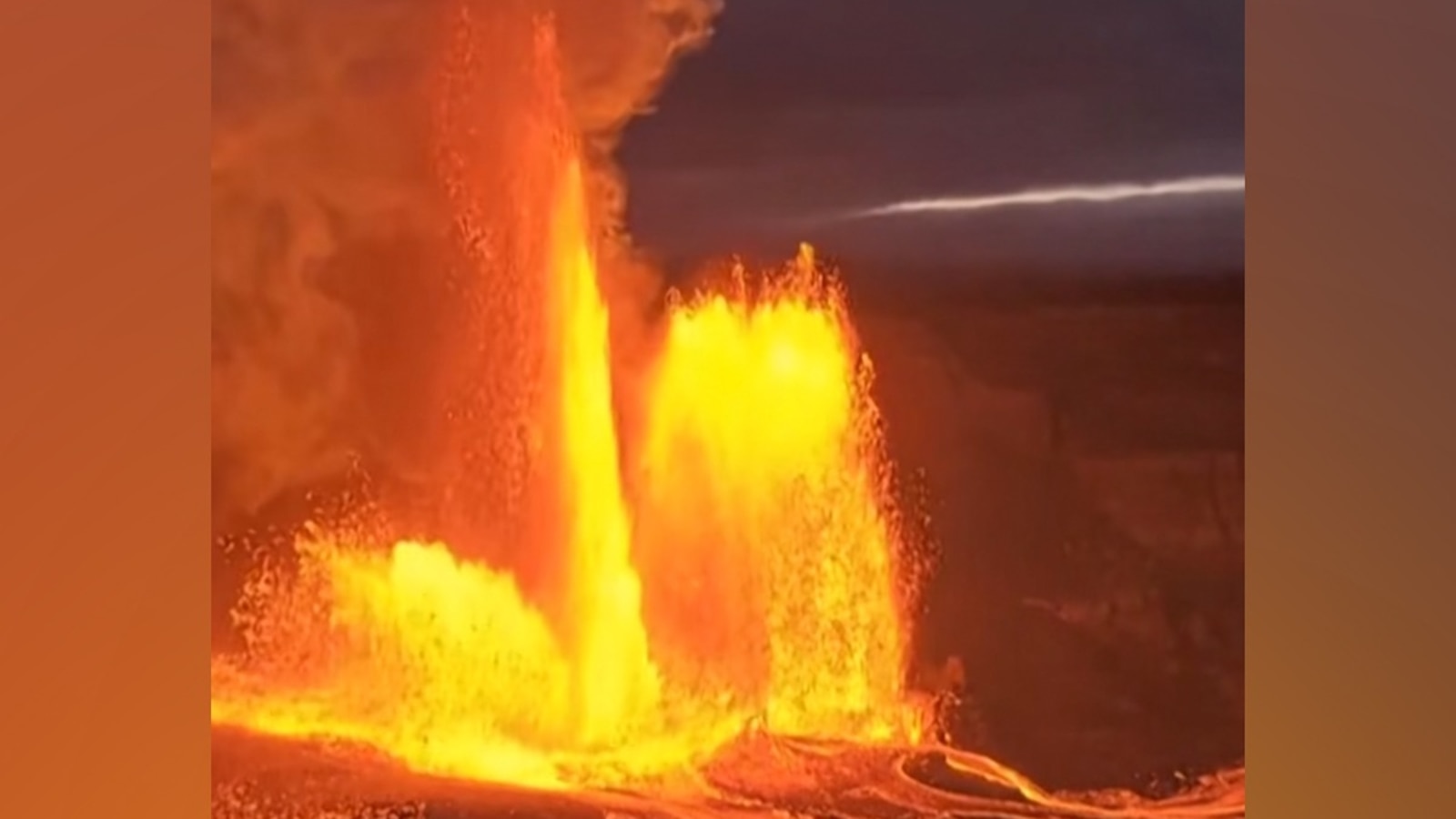Hawaii’s Kilauea volcano put on a dramatic display Sunday night, shooting lava fountains over 1,000 feet into the air. The six-hour eruption, which ended at 10:25 p.m. local time, marked the 23rd episode in a series of eruptions that began last December.
According to the U.S. Geological Survey’s Hawaiian Volcano Observatory (HVO), the event started at 4:15 p.m. local time when thin jets of lava began spurting from the volcano’s north vent.
Within just 30 minutes, these jets transformed into towering fountains reaching heights of over 1,000 feet, HVO said, close to the height of the Empire State Building or roughly twice the height of the Washington Monument.
An hour later, a second fountain emerged from the south vent, reaching heights of about 800 feet, according to HVO.
The Hawaiian Volcano Observatory reported that the dramatic eruption produced large lava flows that covered approximately half of the Halema’uma’u crater floor. According to their measurements, the volcanic plume from the eruption reached heights of more than 14,000 feet into the sky.

The west Halemaʻumaʻu crater of Kilauea volcano is shown in Hawaii on May 27, 2025.
USGS
While the eruption might sound alarming, HVO scientists say there’s no immediate danger to nearby communities from the lava. All activity remains within a closed area of Hawai’i Volcanoes National Park, and no unusual activity has been observed along other parts of the volcano.

Spectacular Lava Show: Hawaii’s Kilauea Volcano Erupts Again
USGS via Storyful
The eruption can still produce several hazards that residents need to watch out for, officials say. The volcano releases sulfur dioxide that creates what locals call “vog” (volcanic smog) when it reacts in the atmosphere, according to HVO.
The eruption also creates “Pele’s hair” — dangerous strands of volcanic glass that float through the air and can hurt people’s skin and eyes, HVO warned. Additionally, high levels of volcanic gases in the area pose a risk to those nearby, especially individuals with breathing problems. the agency said.

A USGS Hawaiian Volcano Observatory geologist uses an FTIR (Fourier transform infrared spectrometer) to measure the chemical composition of volcanic gas during cycles of spattering and seismic tremor at the active vent at Kīlauea summit on May 22, 2025.
USGS
According to scientists at HVO, there might be another eruption soon. The volcano has been following a pattern of erupting about once per week since December 2024. After each eruption, the volcano begins to inflate as magma builds up underground, preparing for the next show.
For the latest updates and visitor information, check the Hawai’i Volcanoes National Park website at www.nps.gov/havo.

